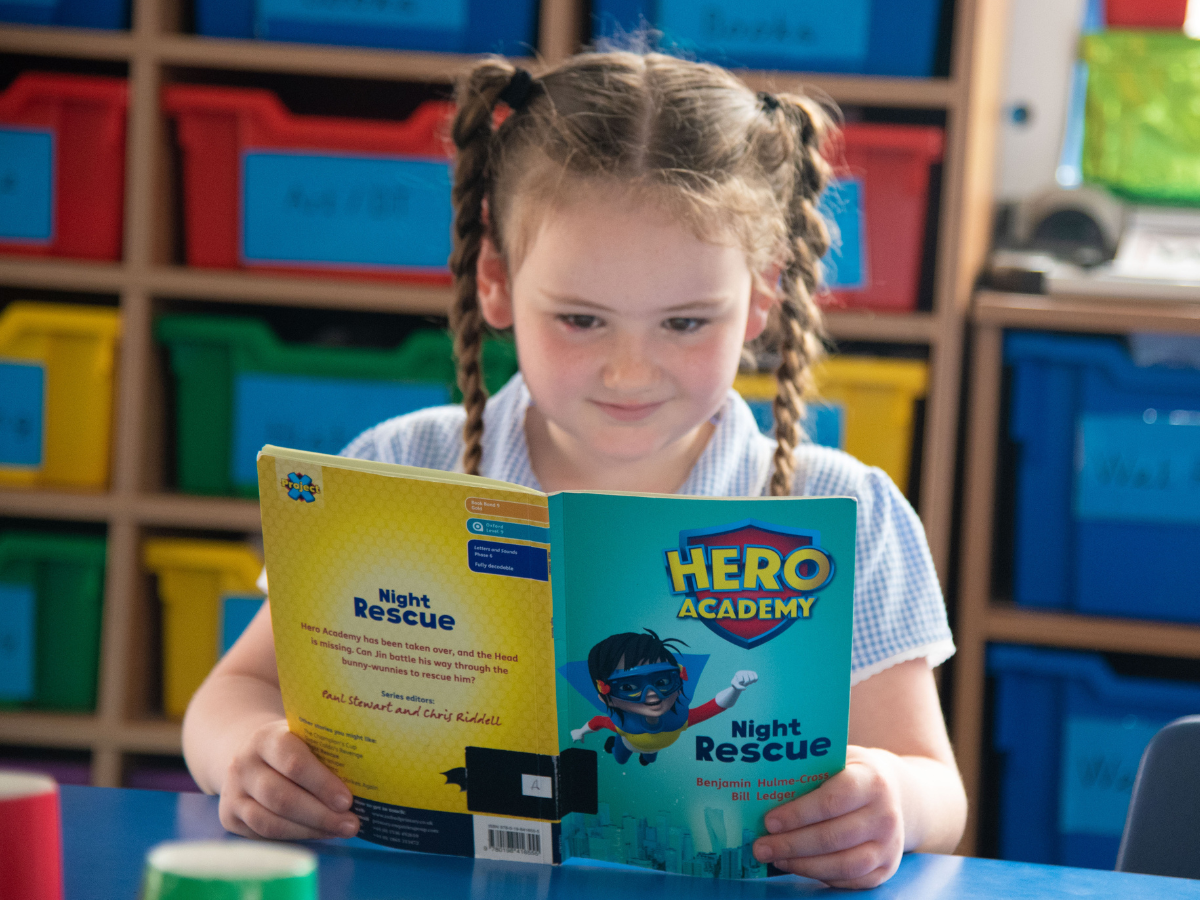‘Fluency’ has always been part of the language of reading, but right now it’s really having a ‘moment’! Some old and outdated beliefs about fluency persist and, as we all struggle to get on top of the latest advice and research, they’ve been joined by some new misconceptions as well! Let’s have a go at debunking some of the myths…
❌ Fluency is a fixed quality which, once achieved, doesn’t change.
No, children might be able to read a simple text fluently but they might read a more complex one with less fluency, even when they know all the GPCs it contains. There are many factors that contribute to the level of a text and children need to read increasingly challenging texts to keep developing their fluency.
❌ The way to develop fluency is to teach more phonics, even when children have mastered the phonics code.
No – once children have mastered their GPCs, what they need is reading practice. Phonics has laid the foundations, now time is best spent practising the skills.
❌ Fidelity to the SSP requires you to provide fluency texts linked to it.
No, the whole point of an SSP is that it teaches children the simple and complex phonic codes, and that knowledge opens up all words from any book or series for decoding.
❌ Once a child has mastered the phonic code, reading levels aren’t necessary.
No, just because a child knows all their GPCs they can still lose confidence and fail to thrive if the books they’re given require more stamina, language complexity or comprehension than they’re ready for. Children need to encounter just the right level of challenge at each stage on their reading journey in order to maintain their enthusiasm, keep reading and build their fluency.
❌ Fluency is mainly about reading speed.
No, though readers need to achieve a certain level of speed in order to hold onto the threads of meaning in a text and achieve comprehension, fluency is about much more than this. It’s also about accuracy and prosody, ie expressive reading including phrasing, emphasis and intonation. The skills of prosody both demonstrate and consolidate comprehension.
❌ Fiction is the best text type with which to practise fluency.
No, children need to become fluent in all types of text. A different style of prosody is required when reading non-fiction, yes, but it is an equally essential one.
❌ Fluency only matters in the early stages of reading.
No, children need to continue to build and improve their fluency throughout the primary phase in order to become secondary-ready and able to tackle the subject-specific textbooks awaiting them in their next school!
How can Oxford Primary help?
Bridge the journey from phonics to fully fluent reading by providing texts of steadily increasing challenge and help children to practise their non-fiction prosody skills. Hero Academy Non-Fiction decodable books align perfectly to enhance reading proficiency.
For your most fluent infant pupils, increase their stamina further with the longer word counts of All Stars. All Stars Fiction books are finely-levelled to develop reading and comprehension skills and stretch able readers.
Explore next in our fluency blog series:
References
Christopher Such ‘Five Things I Wish I’d Said About Reading Fluency’ Primary Colour blog, February 2022
The Reading Framework, Department for Education, July 2023
James Clements ‘Shared reading’, Readerful Guide, Oxford University Press, 2024
Sarah Green (The Literacy Coach) Shining a spotlight on Fluency (training), 2023
More blogs from Oxford Primary Literacy:
- Getting started with ELS Progress: Phonics catch-up programme
- Everything you need to know about ELS Essential Spelling
- How to get your classroom ready for Read Write Inc. Phonics
- DfE Reading Framework: 7 key take-aways for schools
- What’s next after Read Write Inc. Phonics?
- Helping you and your children prepare for the phonics screening check
